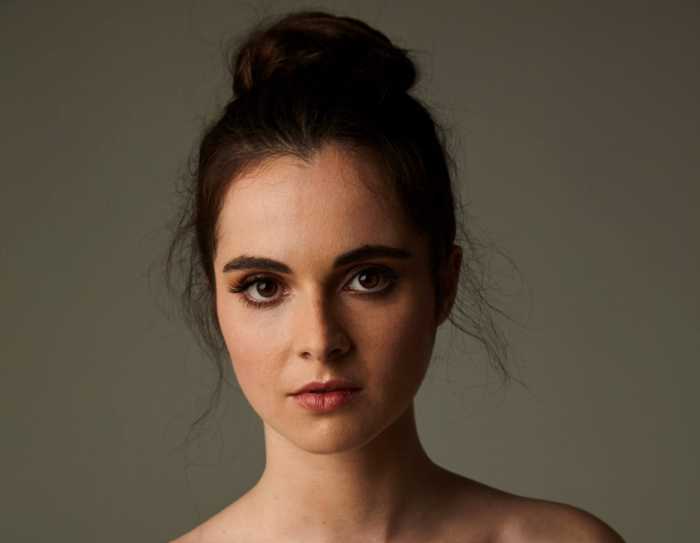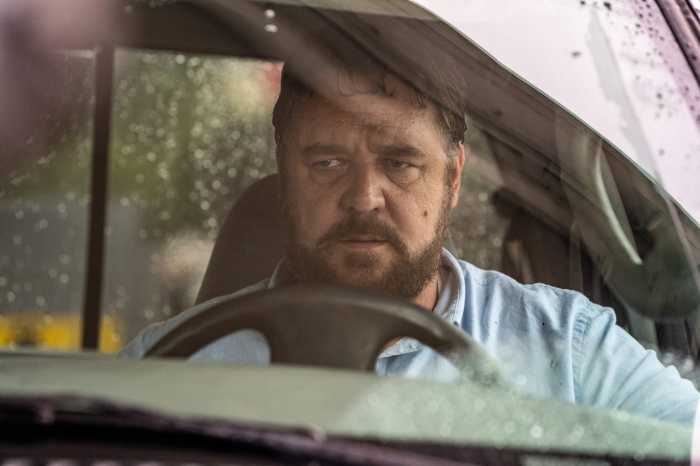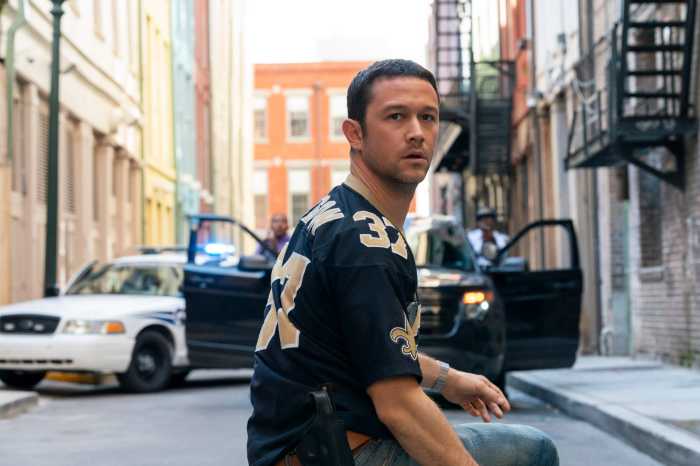Man meets machine in Netflix’s latest animated feature film, ‘The Mitchells vs. The Machines,’ but in a way that ties in human relationships amidst a robot apocalypse. With an all-star cast featuring Maya Rudolph, Danny McBride, Abbi Jacobson, Eric Andre, Olivia Colman and more talented A-listers, Mike Rianda’s movie knocks the push and pull of connection versus perception out of the park.
The story centers on the Mitchell family, but more specifically, the eldest daughter Katie (Jacobson) and her relationship with her father, Rick (McBride). Katie is getting ready to go off to film school and has spent most of her life editing her own Youtube movies in her room, while on the other hand, Rick loves all things to do with nature, and seemingly needs a full on college sized course to even direct his own web browser. On a cross-country road trip to drop Katie off, a robot apocalypse happens, and it’s up the the dysfunctional family to save the planet. It’s that push and pull of a strained relationship and how it evolves that fuels the action, and all of the feels. Oh, and the animation in this film is unlike anything you’ve seen before (they used two vastly different methods to create the animated world), and that in itself is a true treat.
Mike Rianda sat down to discuss what went into making ‘The Mitchells vs. The Machines,’ a kids movie with an adult-sized message.
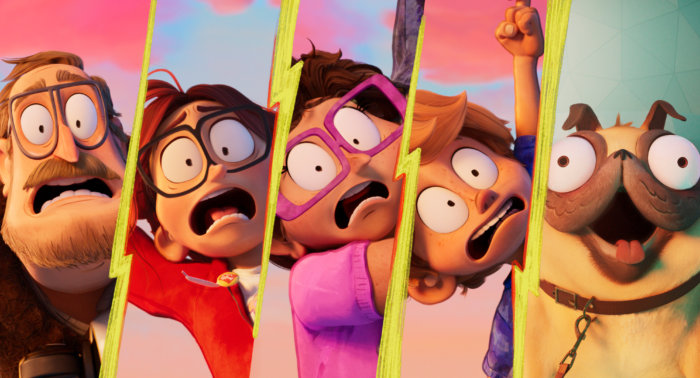
Where did the idea for this movie come from?
I was trying to come up with a way in a big studio setting to tell something that was really personal and really unique. I love all animated movies, but sometimes movies can feel like the product of an assembly line or a conference room, and I wanted [this] to feel as personal as possible. So I sort of drew from my real family, even though I have not yet gone through a robot apocalypse with them, but my dad looks exactly like the dad in the movie and the mom was a combination of my mom and my aunts. These movies take a long time and I wanted it to be about something that I really, really loved and cared about so that it would be some sort of force to keep the movie going—and it really did.
It was really wonderful, my family is the thing I love the most and then I combined it with the thing that I loved the most as a nine-year-old, which is killer robots. And then as an adult, I’m sort of interested in the fact that robots and A.I. can do some of the same things that we can do in a way that makes me a little bit uncomfortable…It’s like if machines can do what we can do, what is really valuable about humans and what’s worth saving? It turns out its relationships and our collaborations with each other and fighting for those relationships, which is not always easy.
The team behind the film went to CAL Tech to check out advancements in robot technology. What did you learn and what made it into the film?
It was really interesting. It was such a fun day, we took the whole team and they had this battle bot competition where the students were creating robots to fight each other—which is very in the spirit of the movie. Also, just the way that those things move: They look really fierce, some of them had saw blades and stuff and then they fall [and they look] kind of…stupid. So, that was one thing, but another thing was just how disconcerting it was to be around a robot. There was [one with] a fully functional pair of legs and it was amazingly walking around with this kind of human dexterity. Then we met the actual sort of people in the robotics lab, and they were telling us what movies get wrong… Like they always make robots feel really light when robots are very heavy. It was all very interesting to see firsthand.

How did the story evolve from a robot apocalypse to a cross-country road trip adventure following a family who is trying to save the world?
We had to have a central core relationship because what we learned very quickly is that audiences are really locked in when a story is about relationships, people love it. I think in this day, you sort of watch movies to figure out how to deal with your family or deal with things in life… I think people really tune in when things are about relationships, I know I do. So we really felt like we needed to drill down on this relationship between Rick and Katie, which is personal to me because I went to film school and my dad is very loving and well-meaning but didn’t quite understand that…But I love him and he loves me, and we had to sort of figure out how to navigate that tension.
My parents gave up a lot for me, you know, and so [it was] sort of trying to put those insights into a movie on how to make that relationship believably be strong. You also have to have reasons for both characters to want to get together and you have to understand where they’re both coming from, so it was like it was this balance of trying to understand both these characters and see them through this journey. A road trip just seemed like the best way to do that, because it sticks everyone next to each other and there’s no escape when you’re in a very small car.
Was that part of the reason why some of the film is set in “Katie vision” where it looks like she’s editing the story as a film? Because then we could see more of her point of view?
One hundred percent. But also, as my coworker says, we’re like a bunch of beaked-up film students that somehow hijacked the big-budget film…So in that way we were like, what if there’s collaging and drones on the screen? Just hyping each other up. But you’re right, it wouldn’t have worked and it wouldn’t have made sense if we couldn’t tie it back to the idea that Katie is a filmmaker and it’s almost like she’s editing the movie and we’re seeing it from her perspective. We found that it really worked when it allowed you to see more into it, gain insight into what she was feeling and thinking and it felt really valuable.
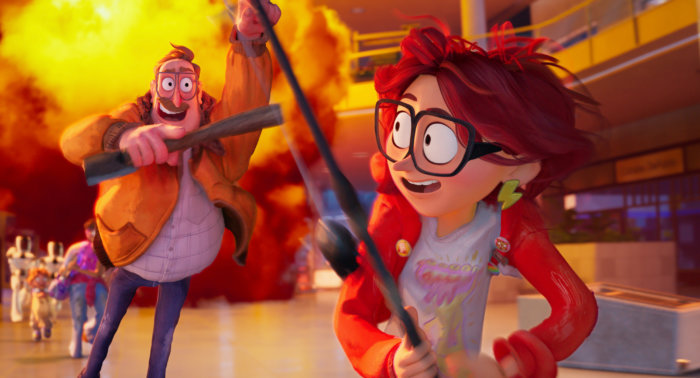
This is a kids film, but its deep. It doesn’t spoon-feed you messaging, it really makes you think. Is that something you guys were going for?
I feel like kids are smart. Sometimes every once in a while, you know, when people in the entertainment industry aren’t at their best, they say, it’s a kid’s movie, who cares? But kids can pick up on that you know? Kids, I think, liked to be challenged. That was something that was really important to us—to make it seem like this isn’t for kids, this isn’t for adults, this is for everybody.
‘The Mitchells vs. the Machines’ drops on Netflix April 30.





